The death of a child is always a tragic incident. Even more so if it was a murder. In our hearts we are outraged and infuriated that someone would be evil enough to take the life of someone so innocent and pure, a child unlucky enough to catch the attention of his or her murderer. But what happens when the killer isn’t a violent madman or a deceptively charismatic sociopath but a child herself? The case of Mary Bell, which gripped all of Britain in the late 1960s, would soon reveal to the world the disturbing truth that not all children are as pure and innocent as we envision them to be.
The Early Years
“Take that thing away from me!”
These were the very words uttered by Betty Bell soon after the birth of her only daughter, Mary Flora Bell, in 1957. Betty was only 17 at the time of Mary’s birth. The father was supposedly one Billy Bell, a career criminal who Betty would later marry. However, the identity of Mary’s true father was never known. Whether Betty planned to have a child at that young age or not is unknown, but what is quite obvious was that she treated Mary much like an unwanted child.
From a young age, Mary was constantly passed on from one relative to another by Betty, much like one would give a worn out dress or old toy to another. Although she would always drop her daughter off at the homes of her relatives, she would always return to claim her once more. It would have been better, I think, if Betty had simply given up on the child – perhaps the tragedy that ensued in the future would not have occurred if Mary had been raised in a normal home environment with loving parents.
This was clearly something that Betty would never have been able to provide. A prostitute, she would travel frequently from the family home in Newcastle-upon-Tyne to Glasgow where she would solicit men. Mary was left at home unsupervised for long periods of time on her own, while her erstwhile father was out committing crimes or cooling off his heels in prison. At the age of two, Mary was already displaying unusual behaviour: she was a cold, detached child who never showed much emotion. We will never know the depth of emotion she felt at being physically abandoned by her mother and her absent father, but Mary outright refused to show any sign that she cared. Crying, she thought, was a sign of weakness.
But abandonment was the least of Mary’s issues. Her mother had drugs and pills lying in the house, in places easily accessible by the precocious girl. Mary would suffer frequent drug overdoses, and it was later believed that most of the drugs were administered by the mother herself. Betty, it seems, hated Mary as much as Mary hated her.
And yet perhaps Mary suffered the most at the hands of the men her mother brought home. In her adult life, Mary would claim that her mother often used her as a sexual prop in her entertainment of clients. The sexual abuse apparently began at the age of 4, and would continue later into her formative years. The mother specialized as a dominatrix and would use Mary in her sadomasochistic scenarios with clients. Only Betty knows if these allegations are true or not, but to this day she has remained silent. It would certainly explain much if it were true though. One can only imagine the shock and horror a 4 year old child has to endure at the hands of such sexual predators, the final nail in the coffin being that it was the mother that put her through such atrocities.
Mary emerged from her early years a clearly damaged, emotionally stunted and traumatized child. But this was only the beginning: a prelude to the twisted path that she would take just a few years later in her young life.
The Progression of a Killer
Mary’s school years were by no means happy ones. She became known at school as a chronic liar and a disrupter. Vandalism and thefts were by no means her only specialties, for she was also a bully. Students who were younger than her would avoid her at all costs as she would often attempt to physically intimidate them. At such a young age, her darker side had already emerged. On one occasion, the mothers of three children reported to the police that Mary had attempted to choke their children. In another case, a young boy fell off the roof of a shelter while playing with Mary, but this was later written off as an accident. Mary would also say that she wanted “to hurt people”.
It was while in her schooling years that Mary picked up a follower: 11 year old Norma Bell (of no relation to Mary). While being obviously older, Norma was always the subservient one in the pair. At the age of 10, Mary had already become an intelligent, cunning and manipulative girl who had no qualms with breaking the law to get what she wanted. Norma, on the other hand, was described as “a bit slow and dim, in no way Mary’s intellectual equal”. Mary clearly reveled in her dominance over Norma and the pair exerted their terrifying influence over the rest of the school. Together they began a downward spiral into murder and madness.
The First Victim
On 25 May 1968, the body of 4 year old Martin Brown was found lying in an old abandoned house. The two boys who had discovered the body quickly fled to the police, but they attributed his death to the accidental overdose of pills from a bottle lying nearby.
We will never know how the girls lured the trusting toddler away from his family to an abandoned house, or if the murder was pre-meditated or simply violence that got out of hand. At the end of the day though, Martin Brown lay dead.
Mary Bell, elated at having gotten away with her first kill, broke into a nursery with Norma a few days later. There they left expletive-laden notes taunting the police and claiming responsibility for the murder of Martin Brown, but the police dismissed it as a silly prank. Mary would later visit the grieving mother of Martin a few days after the discovery of his body and ask to see him. When told that he was dead, she would reply “Oh, I know he’s dead. I wanted to see him in his coffin”. Mrs. Brown slammed the door in her face.
It’s apparent to me that the police had obviously bungled up this part of the investigation. The police assumption that Martin Brown had overdosed was one that should not have happened at all: later autopsies would reveal that he had been strangled to death. Mary herself would later admit that she had massaged the throat of the young boy, promising to “soothe his sore throat” before her fingers closed in and sealed his last breath. Of course, at this point his death was written off as a tragic accident and no one would have even suspected that the one responsible for the deed was a child. It seems like Mary herself almost wanted to get caught, to claim responsibility for the murder of Martin Brown. Her notes indicated a disturbing childish perversion, intertwined with a psychopathic tone.The failure to discover the true nature of Martin Brown’s death meant that the case eventually grew cold, with the people of Newcastle slowly forgetting and assuming that it was a one-off case, an anomaly.
But they were wrong. Act Two of the nightmare was just beginning.
A Second Slaying
A month after the passing of Martin Brown, another toddler, 3 year old Brian Howe, went missing from his home. His sister, Pat Howe, was out looking for him anxiously when she chanced upon two young girls. They agreed to help the distraught sister look for her brother, walking all around the neighbourhood and searching for the missing toddler. But Mary and Norma knew perfectly well where he was: his corpse was between some large concrete blocks at an industrial area near the railroad tracks. Norma would later tell investigators that Mary wanted Pat to discover the body of her dead brother because “she wanted her to get a shock”.
Regardless, Mary’s sick fantasy didn’t come true and Pat went home when it got dark. Brian Howe would only be discovered by the local police hours later, near midnight.
You can just imagine how it was for the family members of Brian: waiting, late at night, for any sign that he would return. And when a knock resounds at the door, they rush to it, desperate for a kind passer-by to tell them that Brian was safe and sound. But the Howe family met the grim faces of the policemen instead, and their world was never the same again.
Examining the body of Brian would tell the investigators much about the perpetrator of the crime. He had been strangled, his hair cut out in clumps and his genitals mutilated with a pair of scissors lying nearby his body. On his body someone had carved an “M” shape with a razor blade. Inspector James Dobson would later remark that “There was a terrible playfulness about it, a terrible gentleness if you like, and somehow the playfulness of it made it more, rather than less, terrifying.” Medical examiners began to suspect that a child was responsible for the murder.
The Pursuit of a Child Killer
Meanwhile, the community of Newcastle was plunged into a full scale panic. Investigators interviewed the children of the community, on the lookout for any suspicious behaviour. When they reached Mary Bell, they knew they had found Brian’s killer. During her questioning, she remained calm and composed. She was evasive and acted strangely, giving vague answers to questions.
However, she slipped up when it came to the scissors found near Brian: Mary revealed confidential details that only the killer would know. The net around her was already closing in.
When questioned, Norma Bell quickly confessed to the police that it had been Mary who did it. Describing the murder of Brian Howe in great detail, she said that “Mary ran her fingers along his lips. She said she had enjoyed it.” This was all that was needed to convince the police of Mary’s guilt, and she was arrested that very night and led to the station.
After a long, evasive interview in which Mary attempted to dodge questions and generally gave calculated and sly answers, she finally admitted to being present when Brian died. For all her precocious intelligence and guile, even Mary knew when the game was up. She gave an official statement admitting her role in the death of Brian Howe, and attempted to implicate Norma in the murder.
The police later saw the similarities between the Brown and Howe cases and managed to link them to Mary and Norma Bell. All this time the girls were incarcerated in the Newcastle West End police station, where Mary would make disturbing comments to the police officers in nonchalant tones. But she wouldn’t have to wait long to get out of such an uncomfortable space.
On December 5th 1968, Mary and Norma Bell were brought to trial for the murder of Martin Brown and Brian Howe.
Trial, Incarceration and Subsequent Life
The trial was one that would grip the nation as people waited to see with bated breath what would happen to an 11 year old killer. Mary would remain emotionally blank and composed in court, answering questions rationally and logically with a confidence seldom seen in children. Norma, on the other hand, was clearly distraught. Surrounded by sympathetic family members and supporters, she became a star witness for the prosecution, implicating Mary for the murders and painting herself as a mere “follower”. Just like before, Mary would refute Norma’s statements and state that she was more guilty than her. Yet for all their constant attempts to push the blame on each other, the girls retained a curious connection. When you thought of Mary, Norma wouldn’t be far behind. It was like a dark bond, a deadly friendship where each party would be dragged down into the abyss, clutching tightly to each other.
The defense attempted to paint Mary as a victim of circumstance: highlighting her past in great detail, it was obvious that the attorney attempted to appeal to heartstrings of the jury. But perhaps he hadn’t considered the fact that these very same heartstrings had already been tugged by the images of young Martin Brown and Brian Howe, their grieving mothers sobbing over their lifeless bodies.
At the end of the trial, the verdict was announced: Norma Bell was acquitted of the two charges of manslaughter, while Mary Bell was found guilty of manslaughter due to diminished responsibility. Mary cried openly for the first time in court. Her father and mother sat nearby, unmoved by her cries. If they felt a need to comfort her, it was not apparent.
Mary Bell would be sent to a young offenders’ institute, where she would spend the next 8 years. She would then be transferred to another prison following an attempted escape, where she would remain until 1980, released with a new identity as granted by the court after having served 12 years.
Under this cloak of anonymity, 23 year old Mary would later marry and have a daughter, born just 4 years later in 1984. They would live a peaceful 14 years before reporters would discover her true identity and location, hounding the house and bringing the wrath of many people on them before they were forced to flee in the middle of the night, bedsheets over their heads. Mary would later fight and win a court battle, ensuring the anonymity of herself and her daughter permanently, to the outrage of the victims’ families. To this day, any court order allowing the permanent anonymity of a person is subsequently known as a “Mary Bell order”.
As of 2009, Mary Bell is a grandmother. The mother of Martin Brown, June Richardson, had this to say about the news:
“A child is a blessing. She took my blessing and left me with grief for the rest of my life. I hope when she looks at this child she remembers the two she murdered. I will never see a grandchild from my son. I hope every time she looks at this baby she realizes what my family is missing out on because of what she has done.”
Final Thoughts
The Mary Bell case is certainly a tragic one. Two young lives, violently snuffed out. No one doubts that the Brown and Howe families did not deserve such personal losses. But what of Mary Bell? To this day, there are many debates on whether Mary was “born bad” or if circumstance made her who she was. We can certainly agree that Mary had a nightmare of a childhood, if such a term can even be used. Years of neglect, unintentional drug abuse and sexual abuse all contributed to the formation of a deeply disturbed, potentially psychopathic child. The fact that this was all done to her by her mother, I think, made the wounds hurt all the more.
But the question that we all need to ask at the end of the day is if such a monstrous childhood is enough to turn someone into a monster themselves. The families of the victims would certainly disagree, and they are correct in their own way. It is easy to dismiss such factors while reading of them, but we need to ask ourselves: if we had been in Mary Bell’s shoes, would we have turned out like her? Or was this urge to kill hers and hers alone?
Only she knows the answer.
In the process of doing research for this article, I watched a documentary about the case. June Richardson, the mother of Martin Brown, was interviewed for her personal experiences.
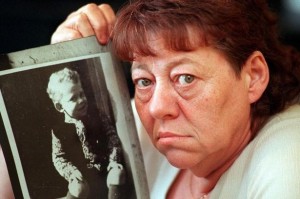
June Richardson with her son Martin, immortalized in a moment of happiness. “‘I’d think, any minute, Martin will pop his cheeky face round the corner. Or I’d see him at a window. Smiling. Or feel him tugging on my back pockets, like he always used to do.”
I heard the pride and joy in her voice when she described how her little boy would like to run around; I heard the decades old grief and sorrow rising up in her throat as she painfully choked out the moment when she saw his body; I heard the unforgiving fury in her words when she spoke of learning that Mary Bell had a new identity, and that she had been paid as part of a book deal.
“‘I’ve even gone out looking for Martin, night after night. I knew he was gone, yet I thought I could find him.”
Her eyes held such pain and torment.
If there’s one thing that can be learnt from the Mary Bell case, it’s that human suffering inevitably causes more human suffering. In fact, this is applicable to most criminals with pasts that haunt them. But this case is special in that all the participants were children: it cut short the lives of two of them and forever changed those of two more.
All that we can do is hope.
That is all we are capable of in the face of such darkness.
June Richardson sums it up best, I think.
“You have to keep the memories. That’s all you’ve got. You’ve got to hold on.”
Sources:
Sereny, Gitta, Cries Unheard — Why Children Kill: The Story of Mary Bell. New York: Metropolitan Books, 1999.
Sereny Gitta. The Case of Mary Bell. London, Arrow Books, 1972.


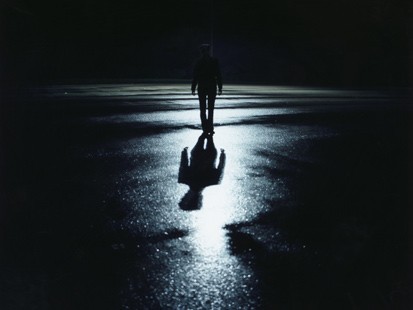


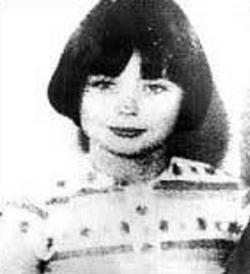
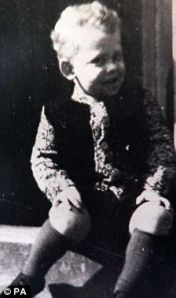
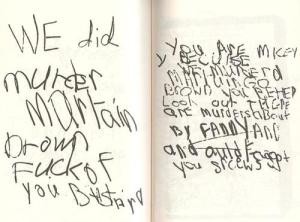
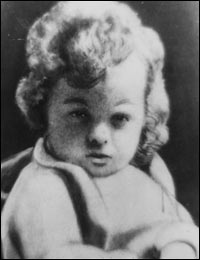
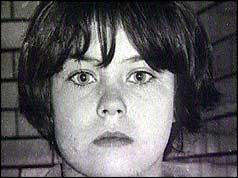
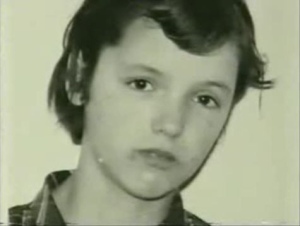
That is just beyond my mental acceptance!! a young girl did that!
Look up Serial Killer Girls” on google and you will find over a dozen other teen female serial killers and murderesses who were obsessed with killing other children, one as young as eight.
I have noticed you don’t monetize your website, don’t waste your traffic, you can earn additional cash every month because you’ve got
high quality content. If you want to know how to make extra money, search
for: best adsense alternative Wrastain’s tools
Mary Bell was lucky for the leniency she received being released after 12 years and given a new name to start her adult life, later awarded full anonymity by the court, taking a series of new names to maintain privacy for herself, her family & her children, without which, relentless persecution and unnecessary but understandable hatred against her would have made living an ordinary life impossible. She apparently has lived a virtuous life without any further criminality and although it might not have gone as well the leniency afforded to her salvaged a life and despite the odds, she managed to extract herself the dark abyss of her traumatic childhood which had formed her.
I worked with Norma many years ago and she was so not of this world she seemed to be living in another place all the time She had the judges summing up almost word perfect,really miss her as a p[poor wee thing
Why on earth wasn’t Mary Bell’s mother arrested?
I didn’t realise she had an accomplice. What became of Norma though?